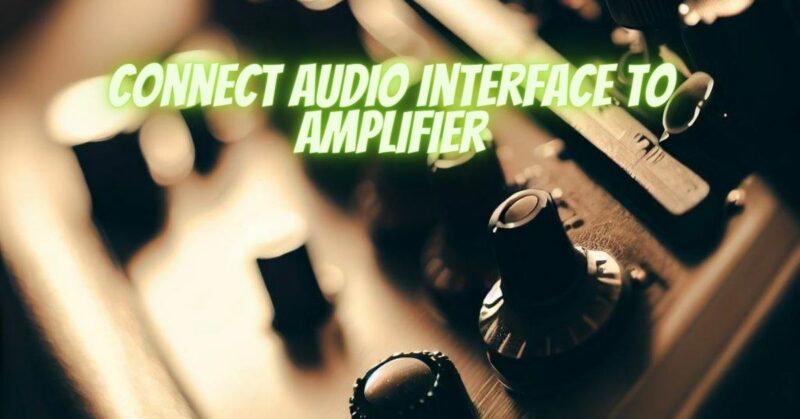Audio interfaces and amplifiers are two fundamental components in the world of audio recording and live performances. While an audio interface bridges the gap between analog and digital audio, an amplifier is crucial for powering speakers and shaping the tone of musical instruments. In this article, we’ll explore the process of connecting an audio interface to an amplifier and the various benefits this setup can offer to musicians, producers, and audio enthusiasts.
- Understanding the Audio Interface:
An audio interface, also known as a sound card or audio converter, is an essential tool for modern recording and production setups. It acts as an intermediary between analog audio signals and digital audio workstations (DAWs) or computers. Audio interfaces typically come with multiple inputs and outputs, allowing users to connect microphones, instruments, and other audio sources for recording, mixing, and processing.
- Introducing the Amplifier:
Amplifiers, or amps, play a pivotal role in the world of music performance and sound reinforcement. They are designed to amplify low-level audio signals from instruments and microphones to a level suitable for driving speakers or loudspeaker cabinets. Amplifiers come in various configurations, including guitar amps, bass amps, and power amps for live sound setups.
- Benefits of Connecting an Audio Interface to an Amplifier:
By combining the functionalities of an audio interface and an amplifier, musicians and producers can enjoy several advantages:
a. Versatility: An audio interface allows you to connect various audio sources, such as microphones, keyboards, synthesizers, and electronic drum kits, to your DAW. By connecting your audio interface to an amplifier, you can use it as a powerful monitor system for playback during recording sessions.
b. Tone Enhancement: Many audio interfaces feature high-quality headphone outputs with dedicated headphone amplifiers. By routing your DAW output through the audio interface and into the amplifier, you can experience your recorded tracks with enhanced tonal characteristics, mimicking the sound of your amp or sound system.
c. Reamping: Connecting an audio interface to an amplifier opens up the possibility of reamping. Reamping allows you to send a previously recorded dry signal from your DAW back through the audio interface and into the amplifier. This way, you can experiment with different amp settings and tones after the initial recording, providing more creative flexibility during the mixing process.
d. Live Performance: For live performances, using an audio interface connected to an amplifier can be beneficial. You can use your DAW to trigger virtual instruments, backing tracks, or live effects while routing the output to the amplifier, providing a consistent and controlled sound for your audience.
- Connection Process:
Connecting an audio interface to an amplifier is a straightforward process:
a. Ensure that your audio interface and amplifier have compatible input and output connections. Most audio interfaces have balanced line outputs, while amplifiers typically have balanced or unbalanced line inputs.
b. Use appropriate audio cables to connect the line output of your audio interface to the line input of your amplifier. For balanced connections, use TRS (Tip-Ring-Sleeve) cables, while unbalanced connections require TS (Tip-Sleeve) cables.
c. Set the output level on your audio interface to an appropriate level to avoid distortion while providing sufficient signal strength to drive the amplifier.
d. Adjust the volume and other settings on your amplifier according to your preferences and the needs of your setup.
Connecting an audio interface to an amplifier opens up a world of possibilities for musicians and producers. By harnessing the versatility of an audio interface and the power of an amplifier, you can achieve enhanced tones during recording, explore reamping options, and provide a controlled and consistent sound for live performances. Whether you’re a guitarist, producer, or live performer, integrating these two essential components can take your audio experience to new heights and elevate your creativity in the world of music and sound.


